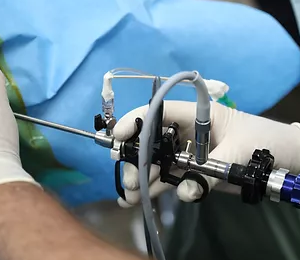Advantages and Disadvantages of Brachytherapy
The term "Brachytherapy" refers to a form of radiation therapy in which the patient receives the treatment directly inside their body. It is positioned as close as possible to the malignancy. Radiation is delivered through the use of small, radioactive objects, such as wires, seeds, or rods. These devices are referred to as implants.
In brachytherapy, your doctor is able to deliver a higher total dose of radiation in a shorter amount of time compared to what is achievable with conventional external beam radiation therapy. The radiation dose is targeted at cancer cells, causing less damage to healthy cells in the surrounding area.
Permanent Brachytherapy
The term "low-dose-rate brachytherapy" can also be used to refer to this technique. Pellets or seed-shaped implants are used in permanent brachytherapy. These implants are extremely minute; each one is roughly the size of a grain of rice. With the aid of small, hollow needles, your doctor places the seeds right into the tumor. After the radiation has been exerted, the seeds are left in place. Their diminutive size causes minimal to no discomfort.

Temporary Brachytherapy
In temporary brachytherapy, once the treatment is over, the implants are taken out. Implants, such as hollow needles, catheters, or balloons loaded with fluid, are put into or in close proximity to cancer for a predetermined amount of time, after which they are withdrawn. Brachytherapy can be administered at either a high or low dose.
When you have brachytherapy, you are typically treated as an outpatient. You will spend a few days in the hospital if you are receiving high-dose therapy. When the radiation is present inside your body, you must abide by certain guidelines in order to save others from its impacts.
Advantages of Brachytherapy
When compared to other therapies for cancer, such as surgery or radiotherapy with an external beam, brachytherapy has a number of advantages that could make it a viable option for patients. These advantages include the following
- For some forms of cancer, brachytherapy is a very successful treatment. Cancers without metastasis are the ones where it works best. The body is exposed to radiation therapy internally.
- When compared to traditional radiation therapy, brachytherapy only targets the area of the tumor, leaving the surrounding healthy tissue and organs unharmed.
- It is extremely effective at treating cancer because the radiation is administered with great precision.
- It is a minimally invasive technique, meaning it doesn't require significant surgery and has a reduced risk of adverse effects because the radiotherapy is delivered precisely and targeted from inside the body.
- It can be performed as an outpatient procedure, avoiding the requirement for an overnight hospital stay in many circumstances.
- Treatment time is very short
- It has quick recovery duration (generally 2 to 5 days), allowing people to resume their normal activities immediately.
- It is more affordable than alternative methods in terms of hospital visits and overnight stays
- Thanks to the advantages of brachytherapy, you might be able to resume your regular activities more quickly and with less disruption
Disadvantages of Brachytherapy
- Brachytherapy, a treatment for prostate cancer, can result in several long-term adverse effects, including increased frequency of urination and trouble achieving and maintaining arousal.
- After getting brachytherapy, you might have trouble with urine leakage.
- Your bowel movements may become looser or more frequent than they were previously.
- It's possible that you'll need to use anti-diarrhea medications like loperamide (Imodium). Bulking substances like Fybogel may also be useful.
 Reviewed by Simon Albert
on
August 18, 2022
Rating:
Reviewed by Simon Albert
on
August 18, 2022
Rating:











